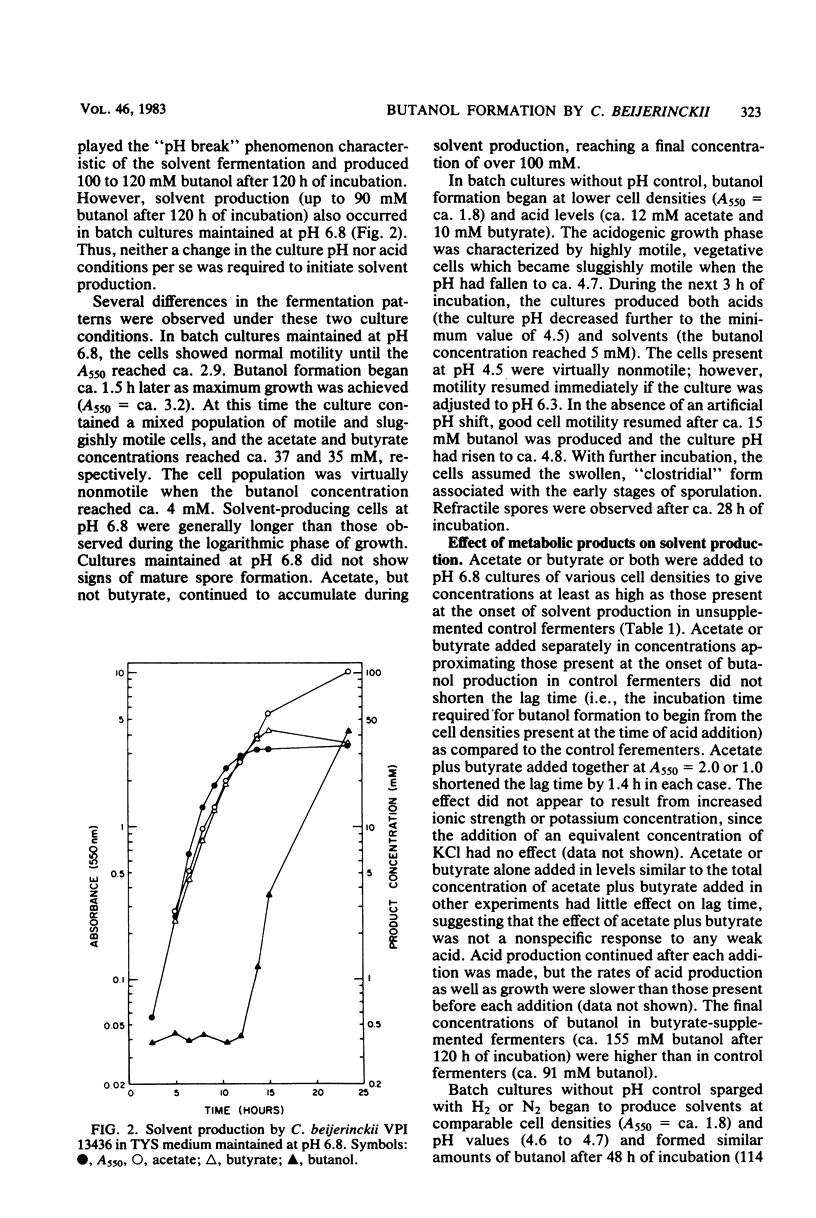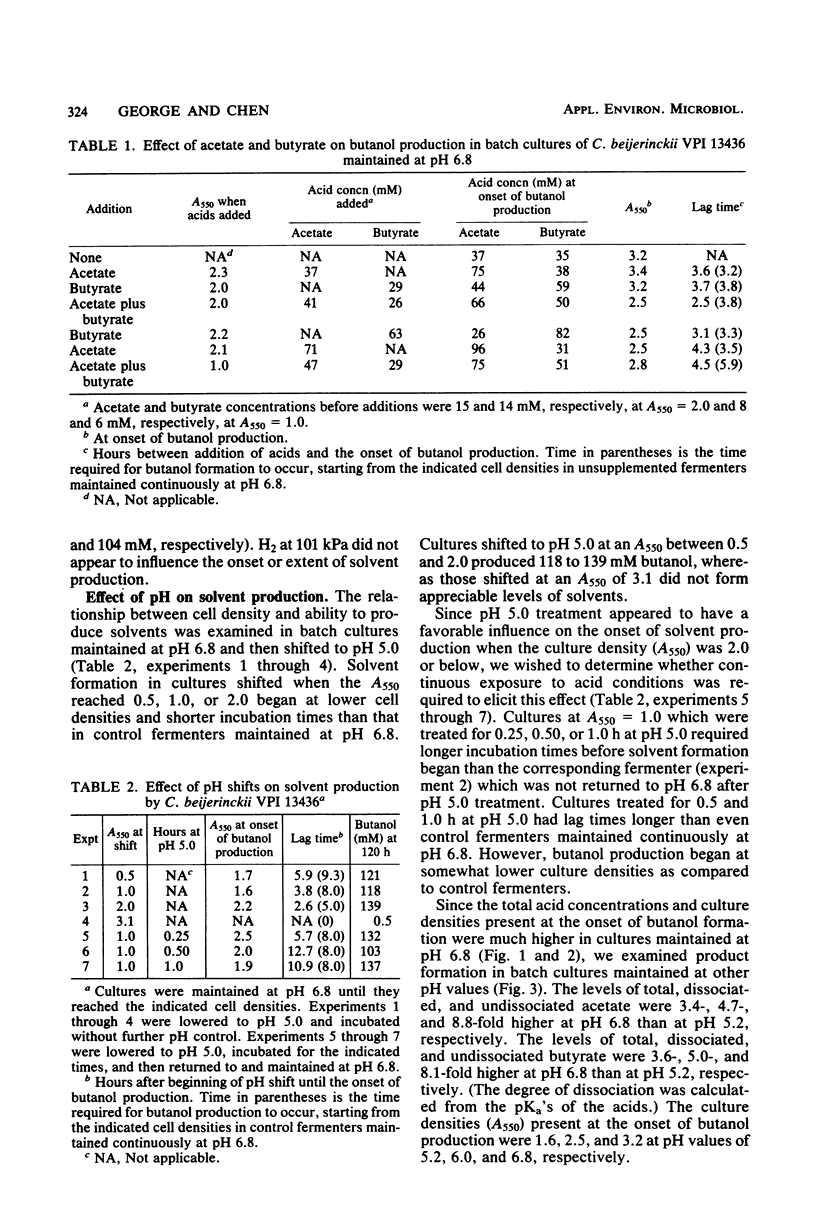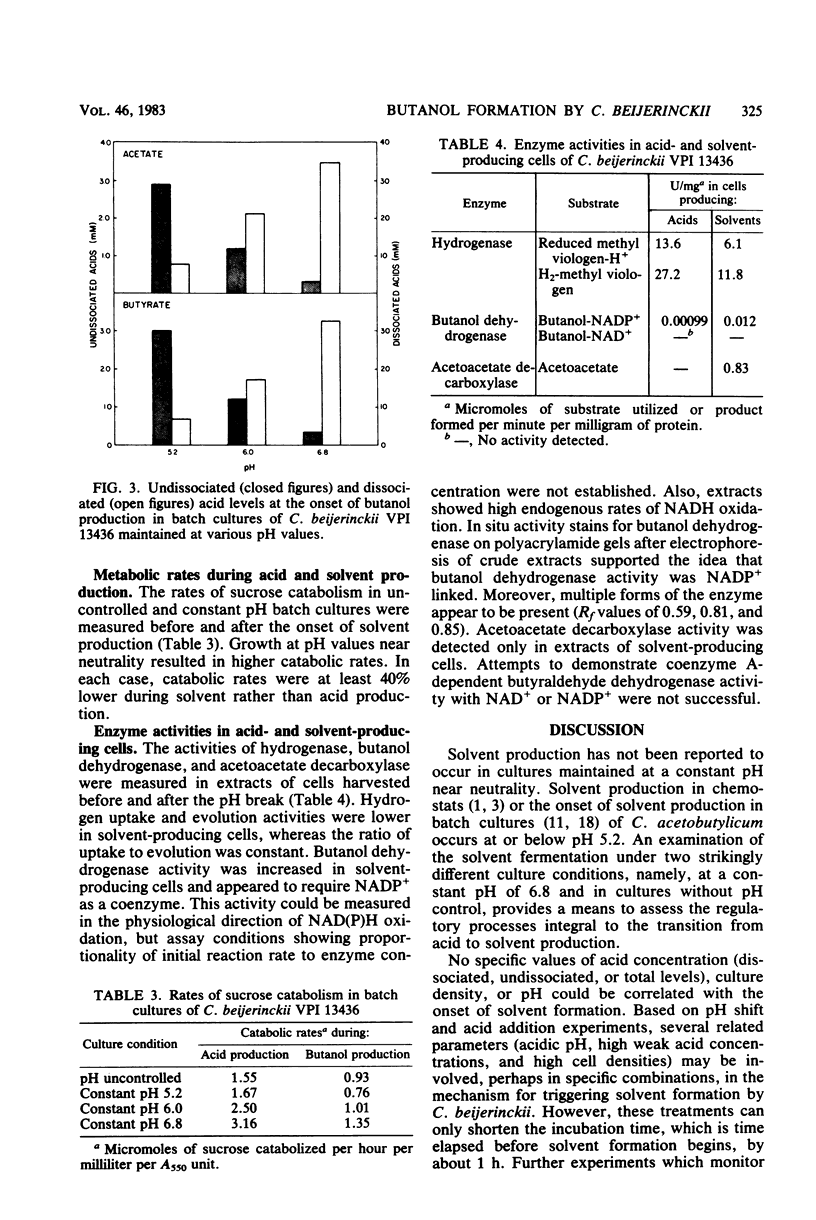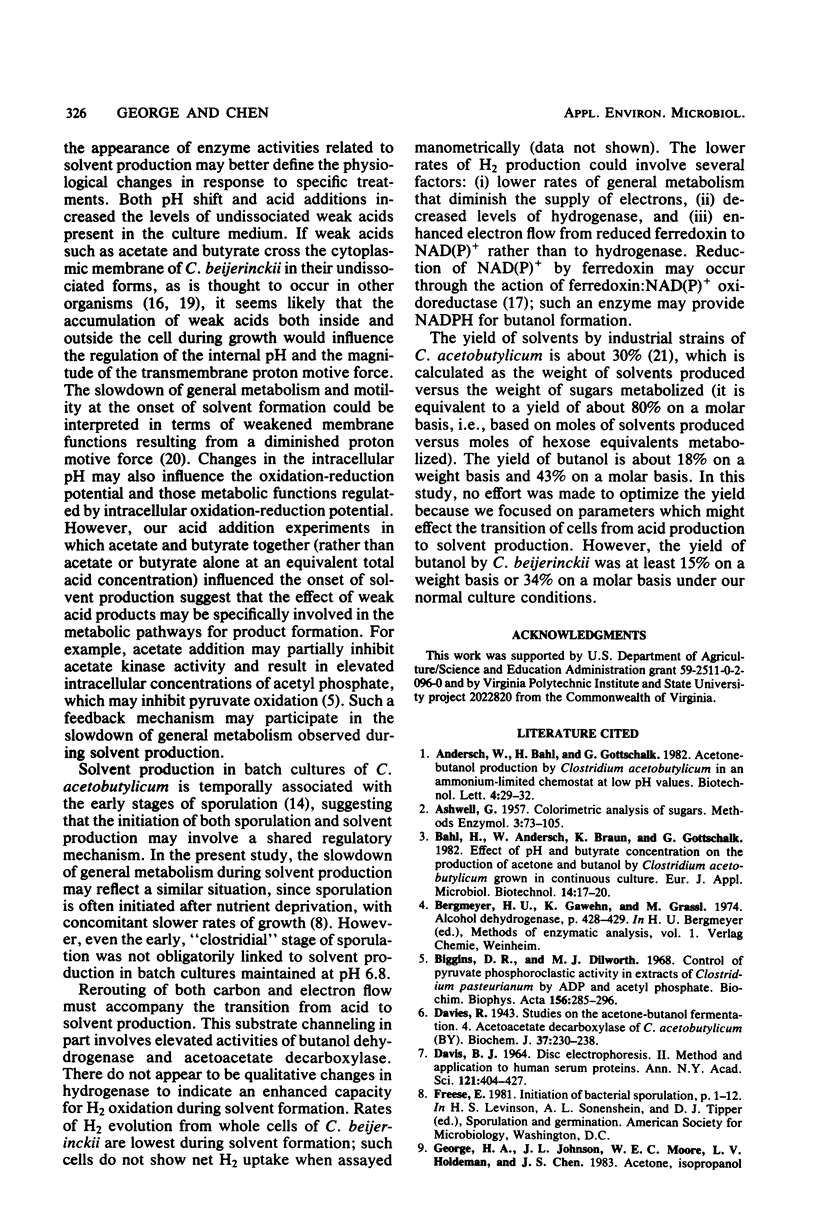Abstract
Factors that may initiate the metabolic transition for butanol production were investigated in batch cultures of Clostridium beijerinckii (synonym, Clostridium butylicum) VPI 13436. Cultures maintained at pH 6.8 produced nearly as much butanol as those incubated without pH control, indicating that neither a change in the culture pH nor acid conditions per se are always required to initiate solvent formation. Acetate and butyrate levels at the onset of butanol production were dependent on the pH at which the cultures were maintained. Cultures maintained at pH 6.8 could be accelerated into solvent production by artificially lowering the pH to 5.0 or by the addition of acetate plus butyrate without a pH change (but neither acid alone was effective). Solvent production was associated with slower rates of growth and general metabolism, and it did not show a requirement for mature spore formation. We speculate that a slowdown in metabolism, which may be brought about by several conditions, is mechanistically related to the onset of butanol production. Extracts of solvent-producing cells contained acetoacetate decarboxylase activity as well as higher NADP+-linked butanol dehydrogenase and lower hydrogenase activities than extracts of acid-producing cells. Solvent production did not appear to involve an enhanced ability to catalyze H2 oxidation.
Full text
PDF






Selected References
These references are in PubMed. This may not be the complete list of references from this article.
- Biggins D. R., Dilworth M. J. Control of pyruvate phosphoroclastic activity in extracts of Clostridium pasteurianum by ADP and acetyl phosphate. Biochim Biophys Acta. 1968 Mar 11;156(2):285–296. doi: 10.1016/0304-4165(68)90257-2. [DOI] [PubMed] [Google Scholar]
- DAVIS B. J. DISC ELECTROPHORESIS. II. METHOD AND APPLICATION TO HUMAN SERUM PROTEINS. Ann N Y Acad Sci. 1964 Dec 28;121:404–427. doi: 10.1111/j.1749-6632.1964.tb14213.x. [DOI] [PubMed] [Google Scholar]
- Davies R. Studies on the acetone-butanol fermentation: 4. Acetoacetic acid decarboxylase of Cl. acetobutylicum (BY). Biochem J. 1943 Jul;37(2):230–238. doi: 10.1042/bj0370230. [DOI] [PMC free article] [PubMed] [Google Scholar]
- George H. A., Johnson J. L., Moore W. E., Holdeman L. V., Chen J. S. Acetone, Isopropanol, and Butanol Production by Clostridium beijerinckii (syn. Clostridium butylicum) and Clostridium aurantibutyricum. Appl Environ Microbiol. 1983 Mar;45(3):1160–1163. doi: 10.1128/aem.45.3.1160-1163.1983. [DOI] [PMC free article] [PubMed] [Google Scholar]
- Gottschalk G., Bahl H. Feasible improvements of the butanol production by Clostridium acetobutylicum. Basic Life Sci. 1981;18:463–471. doi: 10.1007/978-1-4684-3980-9_27. [DOI] [PubMed] [Google Scholar]
- Jones D. T., van der Westhuizen A., Long S., Allcock E. R., Reid S. J., Woods D. R. Solvent Production and Morphological Changes in Clostridium acetobutylicum. Appl Environ Microbiol. 1982 Jun;43(6):1434–1439. doi: 10.1128/aem.43.6.1434-1439.1982. [DOI] [PMC free article] [PubMed] [Google Scholar]
- Mayhew S. G. The redox potential of dithionite and SO-2 from equilibrium reactions with flavodoxins, methyl viologen and hydrogen plus hydrogenase. Eur J Biochem. 1978 Apr 17;85(2):535–547. doi: 10.1111/j.1432-1033.1978.tb12269.x. [DOI] [PubMed] [Google Scholar]
- Padan E., Zilberstein D., Schuldiner S. pH homeostasis in bacteria. Biochim Biophys Acta. 1981 Dec;650(2-3):151–166. doi: 10.1016/0304-4157(81)90004-6. [DOI] [PubMed] [Google Scholar]
- Petitdemange H., Cherrier C., Bengone J. M., Gay R. Etude des activités NADH et NADPH-ferrédoxine oxydoréductasiques chez Clostridium acetobutylicum. Can J Microbiol. 1977 Feb;23(2):152–160. [PubMed] [Google Scholar]
- Riebeling V., Thauer R. K., Jungermann K. The internal-alkaline pH gradient, sensitive to uncoupler and ATPase inhibitor, in growing Clostridium pasteurianum. Eur J Biochem. 1975 Jul 1;55(2):445–453. doi: 10.1111/j.1432-1033.1975.tb02181.x. [DOI] [PubMed] [Google Scholar]
- Skulachev V. P. Transmembrane electrochemical H+-potential as a convertible energy source for the living cell. FEBS Lett. 1977 Feb 15;74(1):1–9. doi: 10.1016/0014-5793(77)80739-4. [DOI] [PubMed] [Google Scholar]


